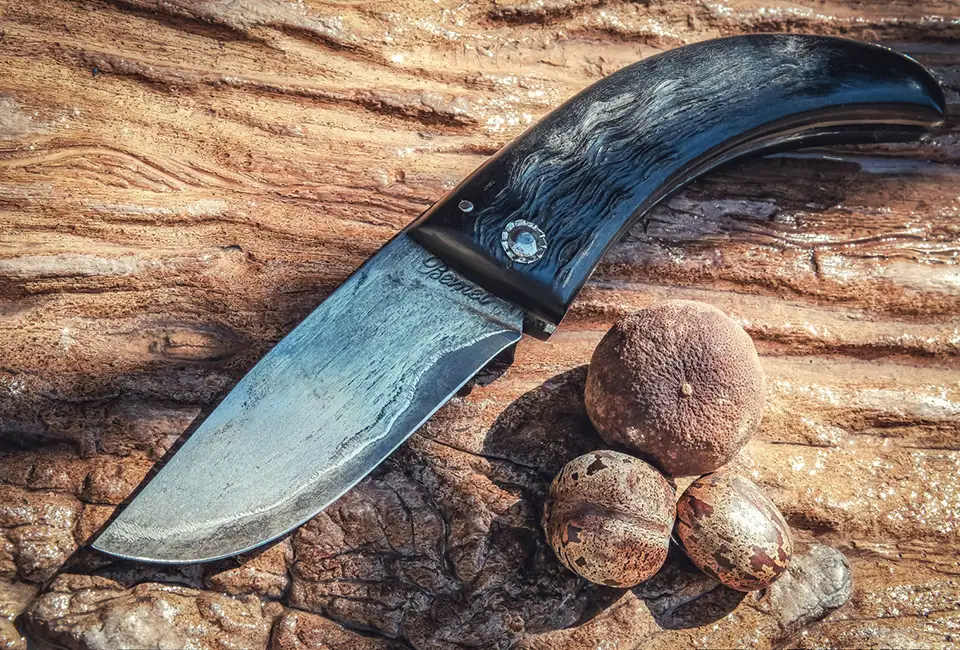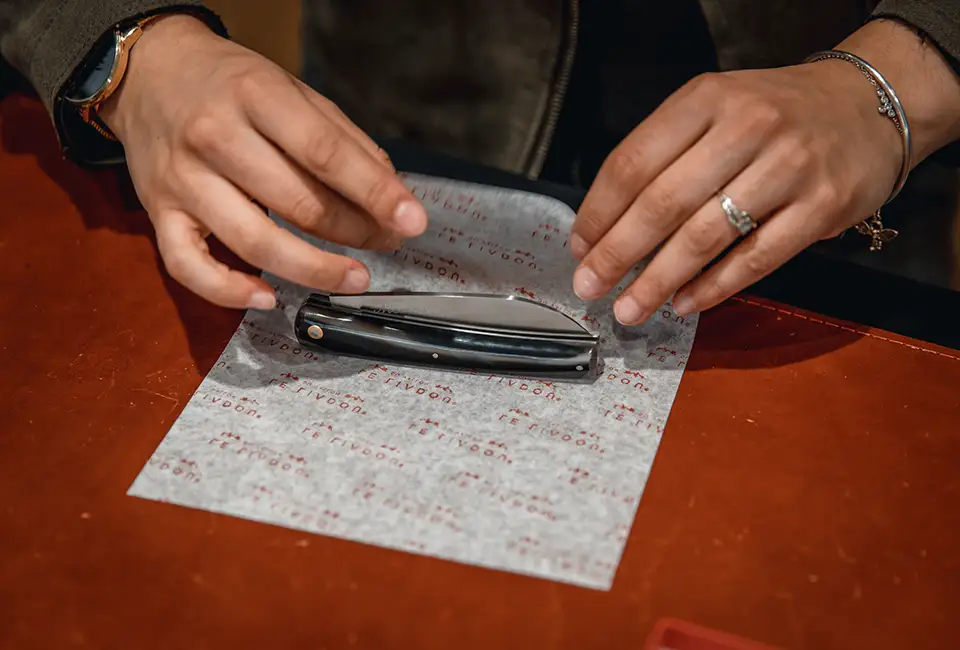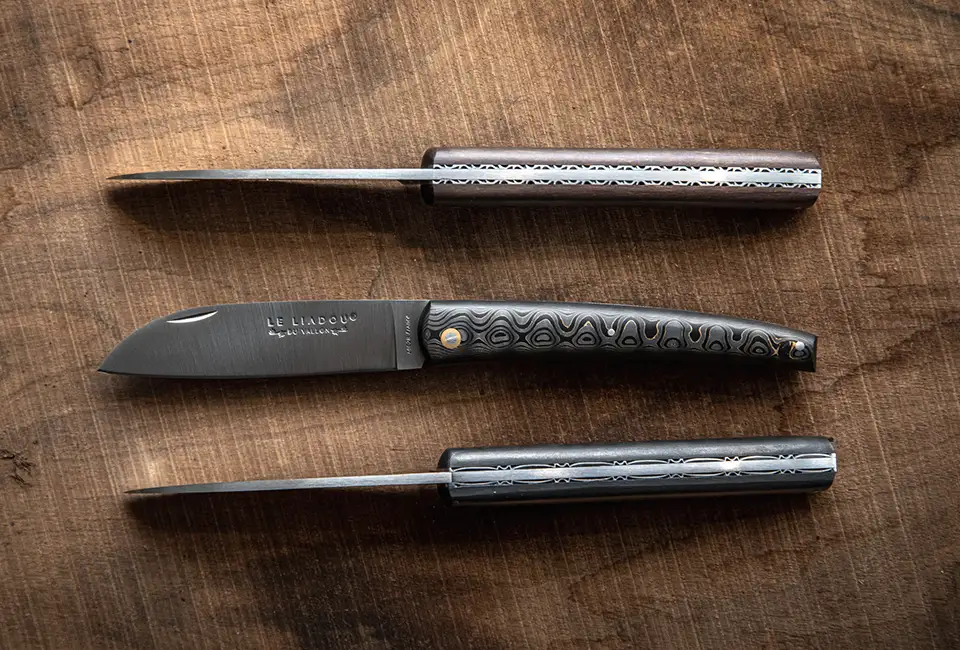Regional Laguiole knives
Laguiole knives are among the most famous and emblematic of French knives. Originating from the village of Laguiole in Aveyron, these knives are appreciated for their elegant aesthetics and exceptional quality.
The history of Laguiole knives
Laguiole knives are iconic pocket knives originating from the village of Laguiole, located in the Aubrac region of France. Their history spans over two centuries, and they have become a world reference in cutlery craftsmanship. The exact origins of Laguiole knives are shrouded in legend and mystery. Knife-making in the region dates back to at least the 16th century. Still, the appearance of the first Laguiole knives as we know them today is generally attributed to the early 19th century. Legend has it that the Laguiole knife was invented by a local blacksmith named Jean-Pierre Calmels, who was inspired by the folding knives used by Aubrac shepherds to create a more practical and versatile knife. Over time, Laguiole knives have become increasingly popular among the region’s shepherds and the surrounding villages’ peasants and inhabitants. Their reputation quickly spread, and local artisans began to perfect their craft and develop a distinctive style that characterizes Laguiole knives.
A knife with a particular design and mechanism
Their elegant design and quality craftsmanship distinguish laguiole knives. They are recognizable thanks to their wooden or horn handle, often decorated with hand-carved designs and their high-quality stainless-steel blade. Laguiole knives are also characterized by their locking system, called forced notch, which securely keeps the blade in the open position. For many years, the manufacture of Laguiole knives was mainly carried out by local craftsmen, who passed on their know-how from generation to generation. Each blade was handcrafted with meticulous attention to detail and the materials’ quality. This artisanal tradition has contributed to the fame of Laguiole knives and their status as a sought-after collector’s item.
Laguiole, copied and imitated all over the world
Today, the manufacture of Laguiole knives is still perpetuated by highly skilled craftsmen, even if many foreign copies flooded the market before the brand’s success. Traditional techniques are combined with modern tools to ensure high-quality standards while preserving the authenticity and uniqueness of these knives. Many manufacturers also offer custom Laguiole knives, allowing customers to choose the materials and designs that match their individual preferences.
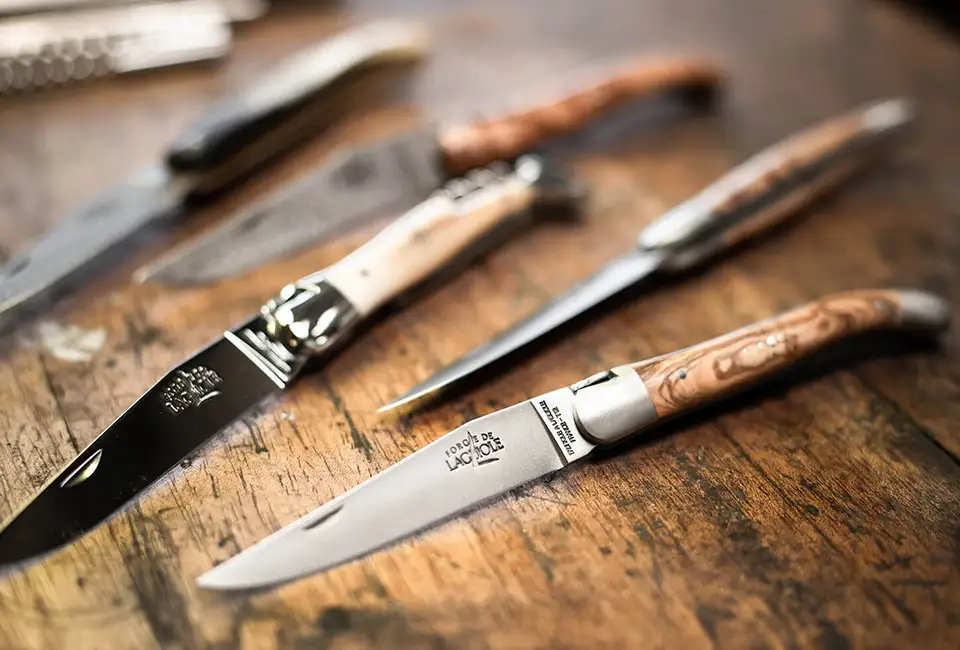
The regional knives of Thiers
The regional knives of Thiers are another essential designation in the world of French regional knives. Made in the town of Thiers, in Auvergne, these knives are distinguished by their elegant shapes and sturdy blades.
The history of Thiers knives
The history of cutlery in Thiers dates back to the Middle Ages when the region became an important knife production center. Initially, cutlery was a craft activity practiced by local blacksmiths who made knives for everyday use, especially in agriculture and livestock. During the 17th and 18th centuries, Thiers cutlery experienced a significant boom thanks to technological innovation and the growing demand for quality knives. The city became the center of production of nationally famous knives and attracted many talented artisans. However, it was in the 19th century that Thiers cutlery experienced its golden age. The Industrial Revolution brought significant changes to knife-making, including the introduction of machinery and mass production techniques. Cutlery companies in Thiers have been able to adapt to these new methods and have experienced rapid production growth.
Thiers and the folding knife
Thiers’ most emblematic regional knife is the folding knife, also called the "pocket knife," which has become the symbol of Thiers’s cutlery. This knife is characterized by its folding blade, wooden or horn handle, and secure locking system. Thiers knives are appreciated for their quality craftsmanship, elegant design, and versatility. Over time, the manufacturers of Thiers have developed different models of knives to meet consumers’ varied needs and tastes. Some models are specific to particular uses, such as a table, hunting, or kitchen knives. Other models are intended for everyday use, offering a combination of functionality and aesthetics. Today, Thiers cutlery continues to thrive thanks to the commitment of local artisans to maintaining the traditions and know-how inherited from their ancestors. Thiers knives’ quality is recognized worldwide, and the town is proud of its status as the "capital of cutlery".
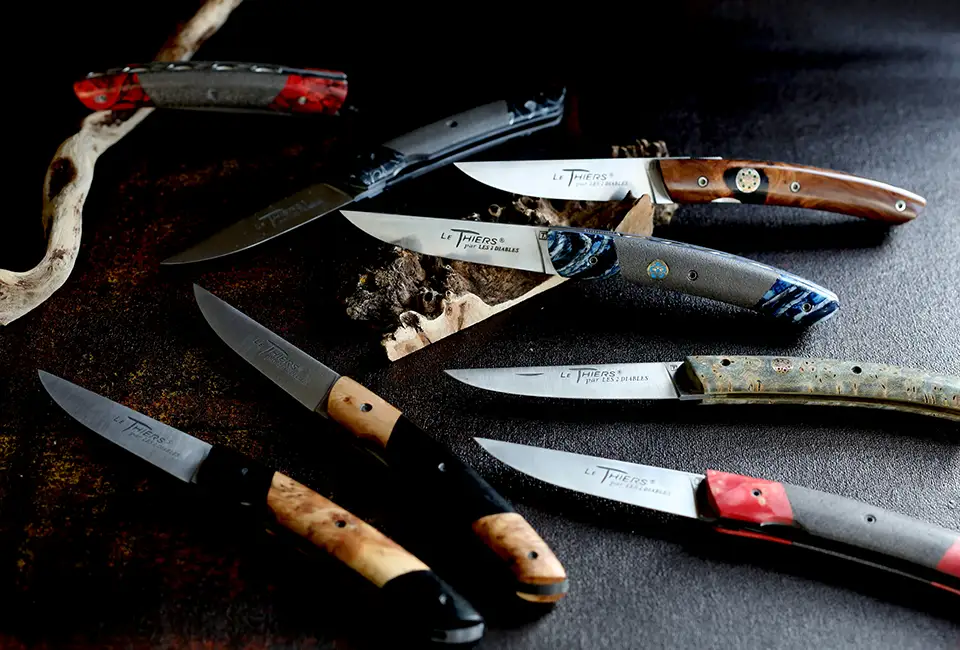
Basque regional knives
Basque regional knives, or "folding knives from the Basque Country", are another example of France’s wealth of regional knives. The knives of the Basque Country, known as "Basque knives" or "Bayonne knives", have a long history linked to the region of the Basque Country, located between France and Spain. These knives are emblematic of Basque culture and are prized for their quality craftsmanship and distinct aesthetic.
The history of Basque knives
The history of Basque Country knives goes back several centuries. The first traces of Basque knives date back to the Middle Ages, when they were used by peasants and shepherds in the region for their agricultural and pastoral activities. These early knives were often rustic, with wooden handles and hand-forged blades.
Over time, the manufacture of Basque Country knives has developed and gained sophistication. In the 18th century, Basque knives began to be produced in larger quantities to meet growing demand. Specialized craftsmen, called "makhileroak" or "sarroilaroak," began to devote themselves to manufacturing regional knives and transmitted their know-how from generation to generation. Basque knives are often characterized by their specific design. They are distinguished by their curved blade, which is both practical and aesthetic. The blades are usually forged from carbon steel or stainless steel and are renowned for their sharpness and durability.
The handles of Basque knives are often made of wood, horn, or bone and may be decorated with inlays, engravings, or carvings. These decorative elements add a touch of elegance and personalization to the knives. Some Basque knives are also equipped with a locking system, such as the "liner lock" or the "back lock," which ensures the blade’s safety when it is open.
Regional knife workshops and Basque culture
Basque knives also have a significant cultural significance in the Basque Country region. They are often associated with traditional Basque dances, such as the "Makil Dantza" knife dance. During this dance, the dancers perform precise and acrobatic movements with Basque knives, thus demonstrating their skill and mastery of the object. Nowadays, the manufacture of Basque regional knives is still perpetuated by local artisans who use traditional techniques and quality materials to create unique pieces. Basque knives are appreciated as objects of art and collectibles but are also used daily by many inhabitants of the Basque Country.
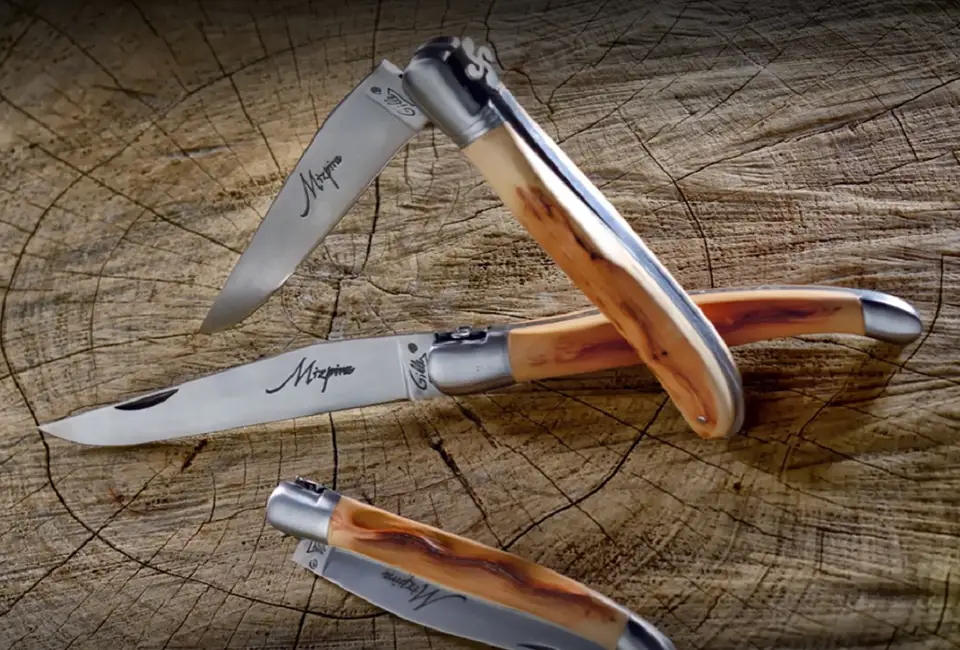
Corsica regional knives
Corsican knives, also known as "Corsican knives" or "traditional Corsican knives", have a rich and ancient history rooted in the culture and heritage of the island of beauty. They have become an iconic symbol of Corsica and are appreciated for their quality craftsmanship and distinctive aesthetics.
The history of Corsican knives
The history of Corsican knives goes back several centuries. The first traces of cutlery in Corsica date back to prehistoric times, when local people used sharp stone tools. However, the emergence of Corsican knives as we know them today is often associated with the 16th century. Shepherds and peasants traditionally used Corsican knives for daily tasks, such as cutting wood, preparing meals, and personal protection. They were also used in traditional rituals and family ceremonies. Corsican knives are characterized by their particular design. They usually feature a stainless steel or carbon steel folding blade, which folds into the handle for safety and portability. The handle of Corsican knives is often made of wood, horn, or bone and may be decorated with engravings or inlays. One of the distinctive elements of Corsican knives is the presence of a ring, called "mortise", on the handle. This ring makes it possible to attach a chain or a leather link, thus allowing the knife to be worn around the neck or on the belt. It was convenient for shepherds and peasants who needed to have their knives close at hand while keeping their hands free.
Corsican knives and the “U Pugnale“
Corsican knives are also often associated with a tradition called "u pugnale", which means "the dagger" in Corsican. The pugnale is a larger, more robust knife, usually carried in a holster on the belt. It was used as a personal defense weapon and was also a symbol of Corsican honor and pride. Over time, the manufacture of Corsican knives has become a specialized craft passed down from generation to generation. Corsican cutler artisans have developed unique skills and expertise in the selection of materials, the forging of blades, the manufacture of handles, and the decoration of knives. Nowadays, Corsican knives continue to be made according to ancestral traditions, using artisanal techniques and high-quality materials. They are valued for their functionality and aesthetic value and considered art and collectibles.
